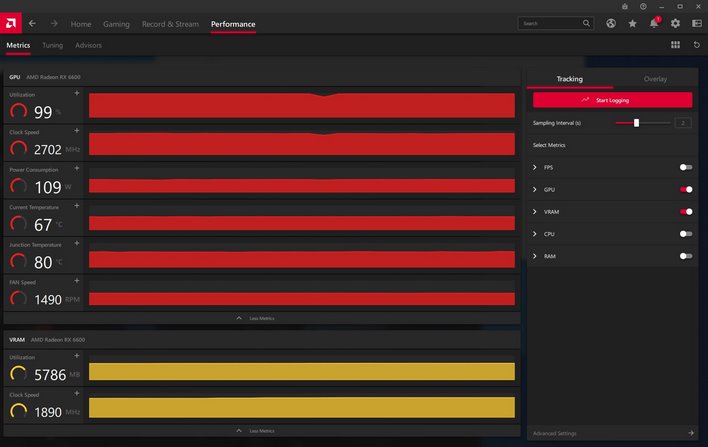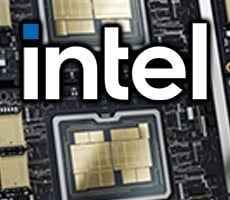AMD Radeon RX 6600 Review: Lower-Cost RDNA 2 For 1080p Gamers
Like previous-gen Radeons, when the Navi 23 GPU powering this card is boosting, frequencies and voltages dynamically scale upward or downward, based on the GPU's workload and the thermal and power thresholds at the time. Those frequency and voltage curves, which determines the card's ultimate performance, however, can be altered to increase performance, save power, or sometimes both...
With the tuning options built into AMD's driver suite, users have multiple ways to tweak a Radeon's performance. Users can manually alter frequencies, memory timings, voltages, fan speeds, and the max power target using percentages or finer-grained numerical sliders, or they can opt to use various preset modes to auto-tune GPU and memory frequencies as well as the GPU voltage, including an under-volting option.
With previous-generation Radeons, though the GPUs had multiple sensors built-in, a single sensor was used to determine the GPU temperature, and data from that lone sensor was used to control the card's thermal profile. With newer GPUs, like the Navi 23 used on the PowerColor Radeon RX 6600 Fighter, AMD has incorporated a network of multiple thermal sensors at strategic locations across the die. Data gathered from the sensors is used to determine what is called the "Junction Temperature", and it's the Junction Temperature that is used to tune the card's power and thermal profiles (the Junction Temperature is effectively the hottest part of the GPU die at any given time). AMD claims the increased resolution and accuracy from the additional thermal sensors allows it to increase overall sustained performance, because throttling based on the Junction Temperature is more reliable and effective.
The tuning options built into AMD's Radeon Software suite offer manual controls, along with automatic under-volting and automatic GPU and Memory overclocking. Finding the highest stable memory and GPU clocks, at the lowest voltage possible, while simultaneously increasing the max power target and keeping temperatures low, will yield the best overall overclocking results.
At its stock settings, we saw the GPU clock typically hovering in the 2,600 - 2,640MHz range while gaming (give or take) with junction temps in the high 70s on our particular sample. With a little tweaking we found that we could nearly max-out the memory clock on our card to 1,900MHz, with fast memory timings enabled. And with a mild under-volt to 1,125mV with a +12% power target, we typically saw a wider-range of real-world game clocks, commonly in the 2,680MHz - 2,710MHz range, though it occasionally spiked higher. The junction temperature while overclocked peaked in the low 80°C range with these settings, without any modifications to the fan curve. Navi 23, at least according to the reporting built into AMD's drivers, is a relatively cool running GPU.

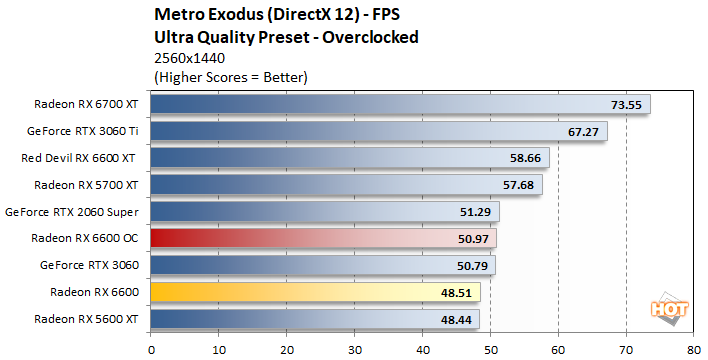
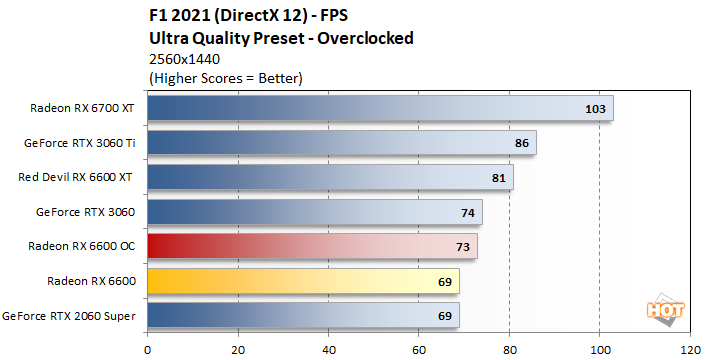
While we had the card overclocked, we re-ran a few tests and saw some significant increases in performance. In Time Spy, the overclocked Radeon RX 6600 nearly caught the Radeon RX 5700 XT. And in Metro Exodus, the 6600 was able to overtake the GeForce RTX 3060 when running at 1440p.
Total System Power Consumption
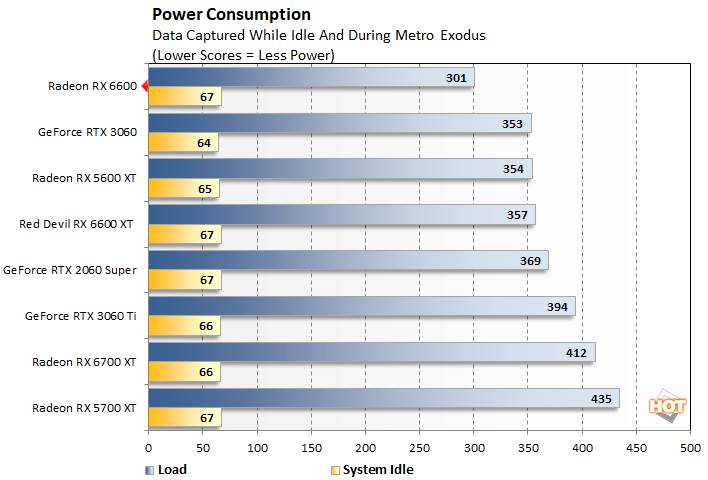
With such low power consumption, and a relatively capable dual-fan cooler, we can also report that the PowerColor Radeon RX 6600 Fighter remains quiet under normal operation. At idle the card is inaudible over the other fans in our test rig and under load, while the fans on the card do spin up to somewhat audible levels, they remain quiet and only produce a dull whir. With its stock fan curve, the fans barely break the 1,500 RPM mark, whether the card is running at default frequencies or overclocked.
AMD Radeon RX 6600: Summary And Verdict
As much as we enthusiasts would all love to own the biggest, badest, most powerful GPUs and highest-resolution displays available, 1080p gamers still represent a massive chunk of the market. Unfortunately, many of the cards that technically target this audience still have significantly inflated pricing, due to the ongoing supply chain shortages, bots, scalping, and mining – by now most of you know the drill.
The introduction of the new Radeon RX 6600 brings another, relatively affordable, low-power option into the fray. AMD has set the MSRP for the Radeon RX 6600 at $329, which can be considered the starting point for many of the partner boards coming, because higher-power – and hence, high-performing – boards will be coming as well, and those will obviously have higher MSRPs. These GPUs should also be somewhat accessible once availability ramps. As of today, Radeon RX 6600 XT and 6700 XT cards are in-stock at multiple e-tailers, so we expect a similar outcome for the Radeon RX 6600. Where actual street prices land, however, is anyone’s guess at this point.
In terms of performance, the Radeon RX 6600 is only marginally faster than the previous-gen Radeon RX 5600 XT, but it is significantly more power-friendly and brings with it support for DXR Ray Tracing. The Radeon RX 6600 requires only a 450w PSU, so for mainstream systems hobbling along on integrated graphics or featuring a low-end discrete GPU, with basic power supplies, it may end up being one of the more affordable discrete GPU upgrades, for users that don’t want to also upgrade their power supply. Relative to other mainstream cards out there from the last couple of generations though, the Radeon RX 6600 isn’t much of an upgrade.
In the end, the new AMD Radeon RX 6600 is a competent, low-power 1080p gaming GPU, that should arrive at prices that undercut many of the other cards in its class. If you’re shopping for a mainstream, modern graphics cards, with support for all of the latest technologies, it is worth a look.

|
|

